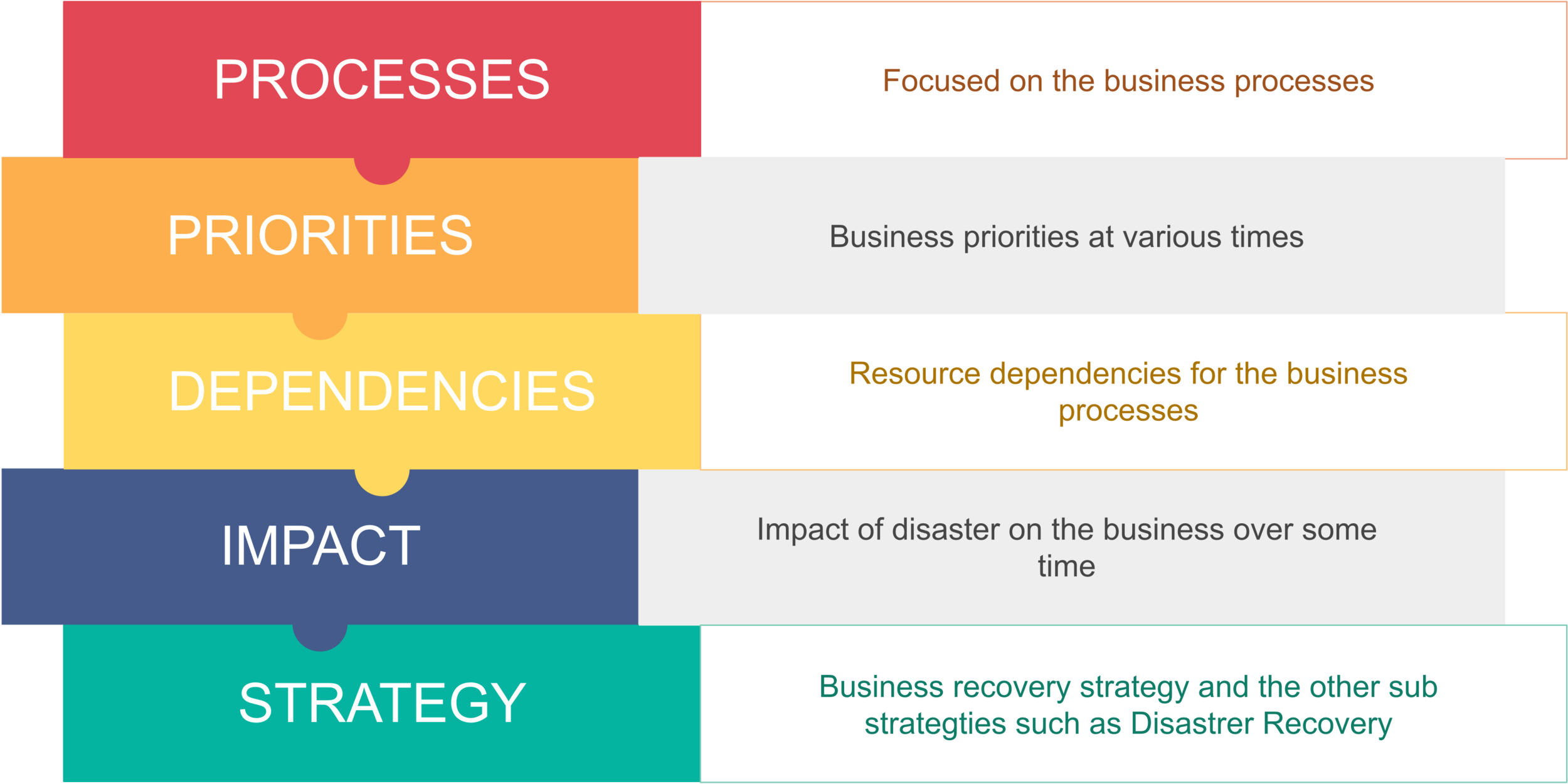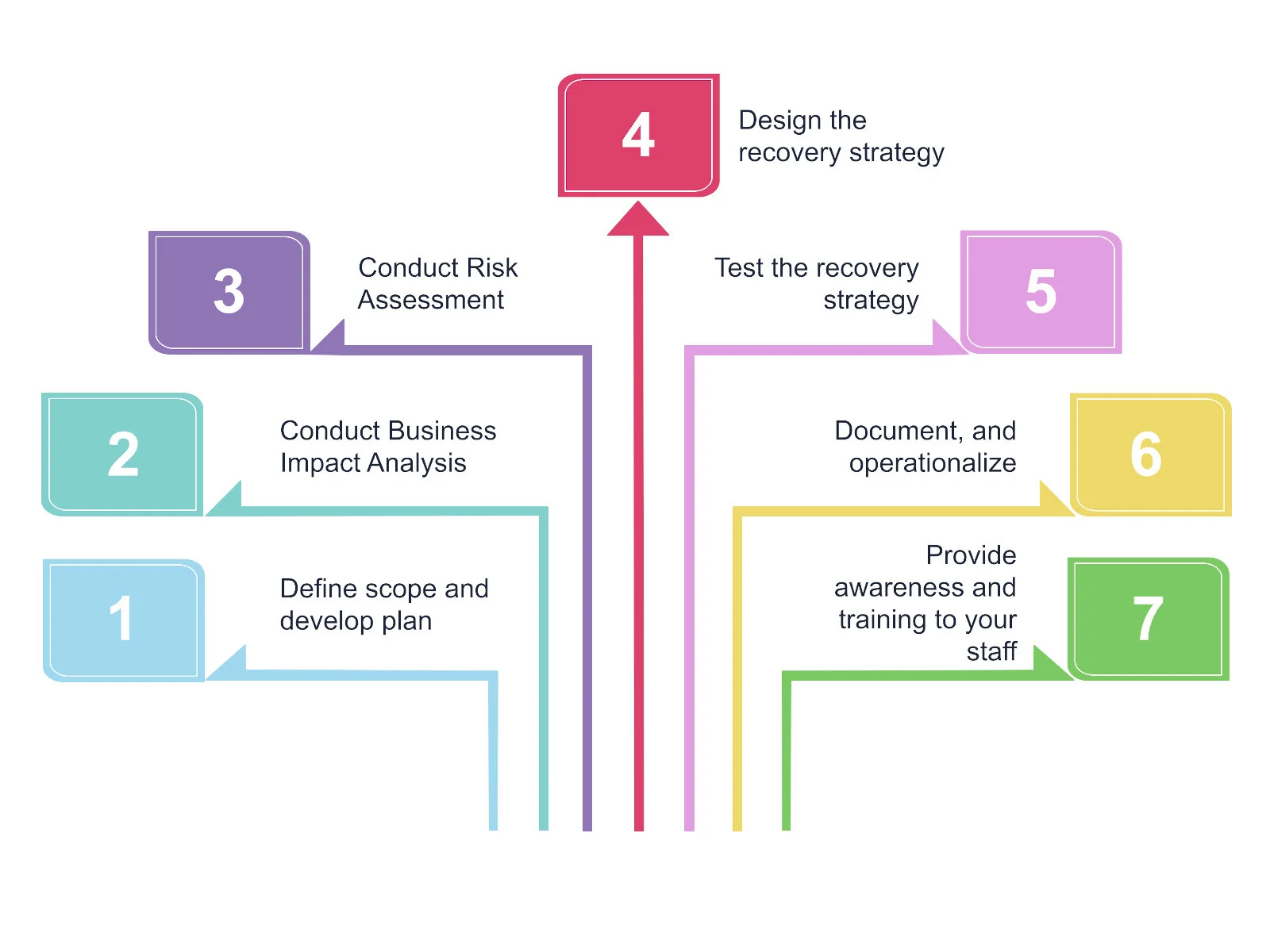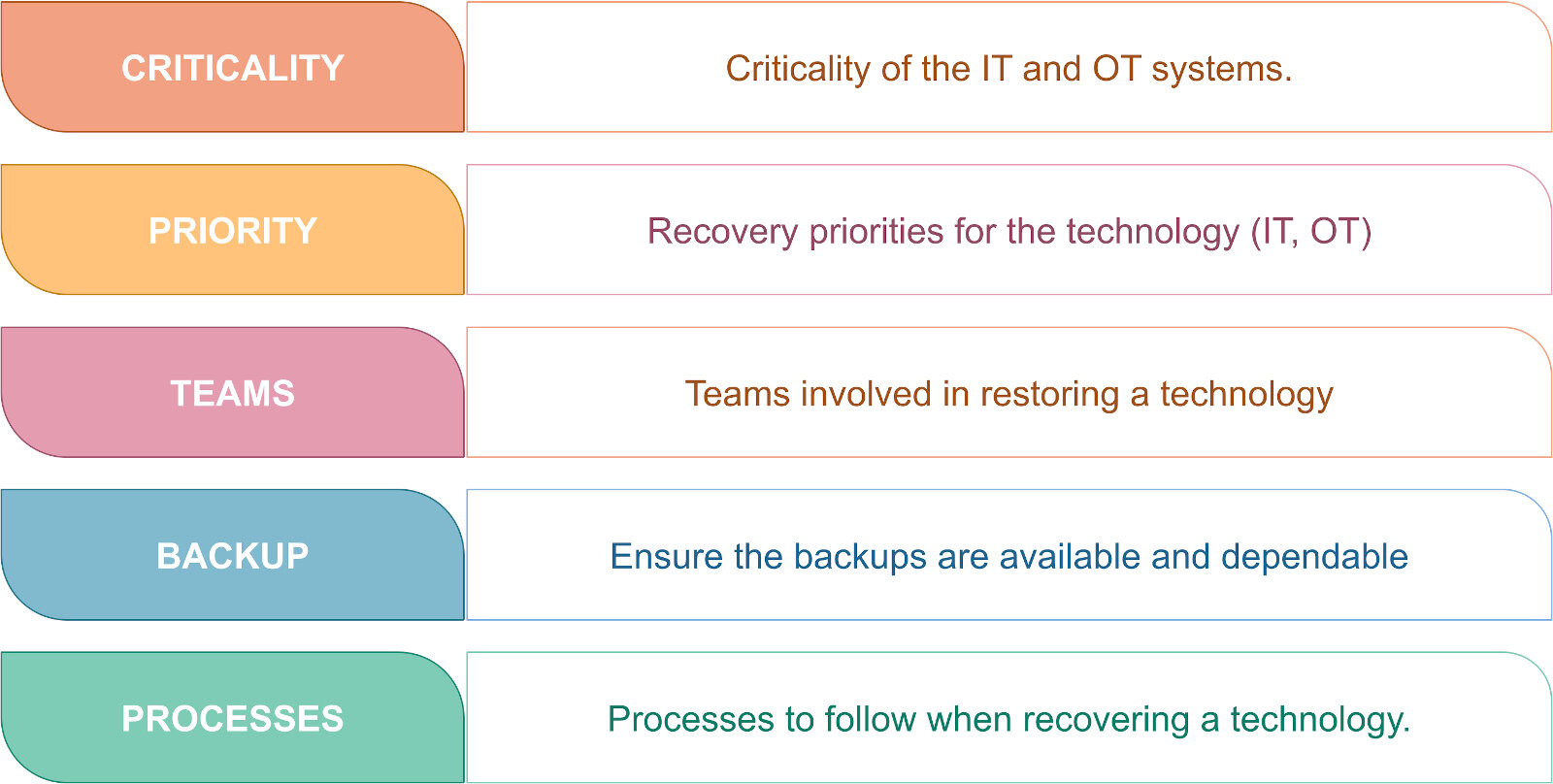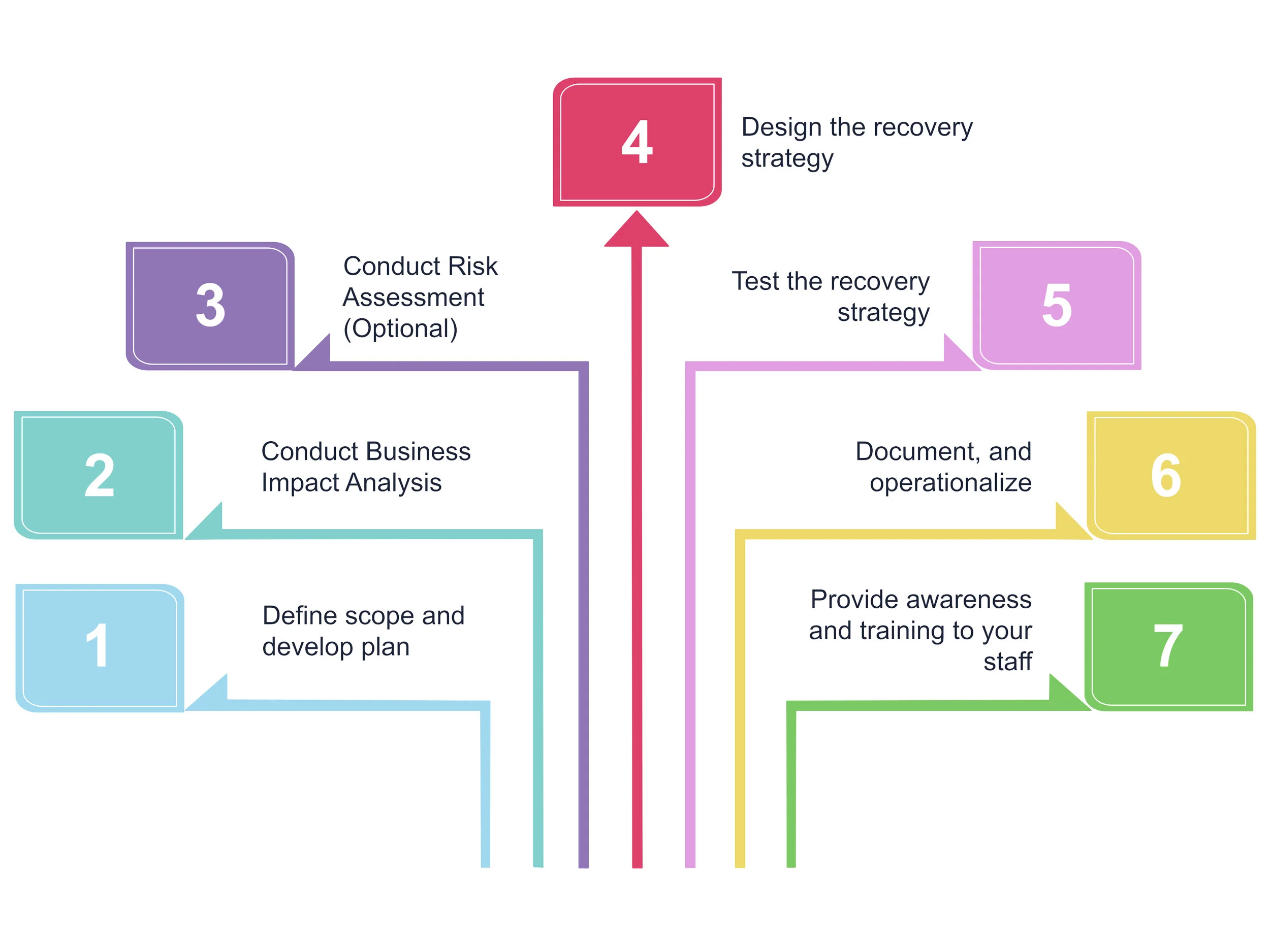Business Continuity Planning: Business Continuity vs. Disaster Recovery
Many professionals often searched to know the difference between Business Continuity and Disaster recovery. Often, these terms are used interchangeably. However, despite their similarities, they are entirely two different strategies. This article discusses the difference between the terms and how they both are related to each other.
Definitions
Before we start discussing the differences, it is essential to define the terms to make them easy to understand.
Business Continuity refers to the processes and procedures to execute to ensure that essential business operations continue during a disaster.
Disaster Recovery refers to the processes and procedures involved to restore the information systems and physical infrastructure required to conduct the business following a disaster.
Business continuity
These are the five critical aspects of Business Continuity.
Figure 01: The five critical aspects of the Business Continuity
Finding the criticality of the business processes at various times and making sure they are available is the focus of the Business Continuity.
To do that, you need to know the following:
the key processes,
resource dependencies,
process inter-dependencies,
priorities of the business processes at various times,
impact when your critical business processes are not available,
data required to execute the processes,
staff needed to execute the critical processes,
important vendors,
and the technology dependencies.
The plan that encapsulates all of the above is called a Business Continuity Plan.
Figure 02: Developing a Business Continuity Plan
Business continuity has a broader scope that includes crisis management, crisis communications, IT disaster recovery, and Cybersecurity incident response.
Figure 03: BCP and its relation with the other plans
Disaster Recovery
Disaster Recovery is a subset of Business Continuity focused on recovering the technologies (IT and OT) after a disaster (or a natural disaster that impacts the technology). Disaster recovery enables organizations to resume their technology-dependent mission-critical functions following a disruption quickly.
Figure 04: The components of the ITDRP
Disaster Recovery works with the other plans such as the Communications plan, Cybersecurity incident response plan, and Crisis management plan to handle technologies disasters that are massive in scale.
Figure 05: Process for developing an ITDRP
The process for developing a Disaster Recovery Plan and Business continuity plan is similar but differs in their context. For example, the recovery strategy in Business Continuity Plan consists of prioritized processes, whereas in the DRP, it is focused on the technology that is critical to the business.
To develop a Disaster Recovery Plan for your technology, you need to know the critical business processes, the acceptable downtime for the technology, current technology availability, external parties such as vendors supporting your systems, and the technology-specific recovery procedures.
The document that details the disaster recovery of the technology is called Disaster Recovery Plan (or most of the time referred to as IT Disaster Recovery Plan).
Closure
Business Continuity and Disaster Recovery are entirely different strategies despite their similarities. Business Continuity is to ensure that the business continues executing critical business processes. Disaster Recovery outlines the processes and procedures to restore vital technology to execute those business processes. Organizations aiming to protect their business after a disaster must document both.





